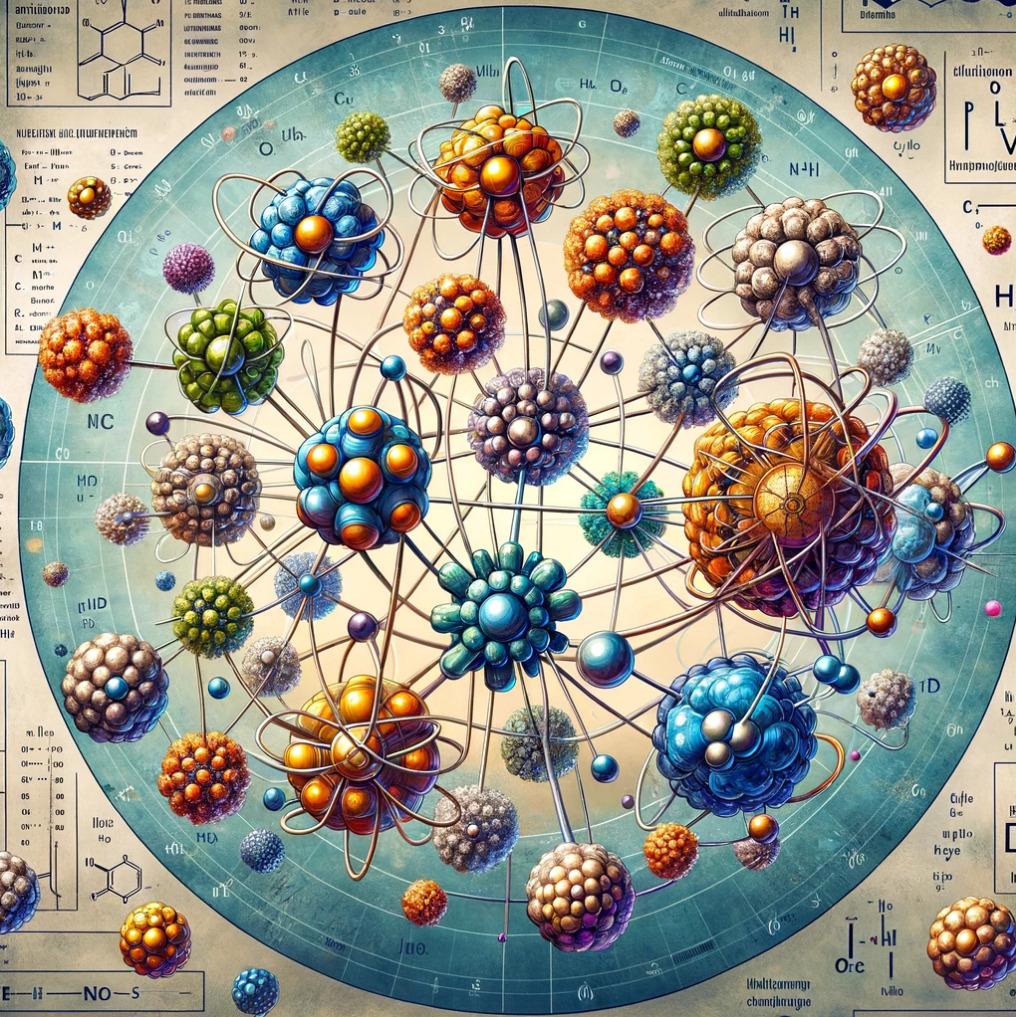
Welcome! Today, we will talk about isotopes, including a close look at thorium isotopes and others such as hydrogen and radon isotopes.
You’ll discover what makes isotopes unique, the difference between radioactive and stable isotopes, and how they’re used, especially in nuclear medicine. We’ll also explain how these isotopes connect to atomic mass and atomic number and why the carbon isotope C14 is crucial in research.
Learn about chromatography and solutions and mixtures.
Introduction to Isotopes and Radioactive Thorium: Key Takeaways
In a hurry? Don’t worry. Our critical takeaways on isotopes will give you a quick and easy summary of the main points:
🟠 What Are Isotopes? Isotopes are versions of elements with different numbers of neutrons. This idea is vital to learning atomic mass and atomic number, with examples from thorium to carbon isotopes.
🟠 Isotopes at Work: Isotopes have many uses, from carbon isotope C14 helping to date ancient objects to treating diseases in nuclear medicine. They play a crucial role in various fields.
🟠 Handling Radioactive Isotopes Safely: While isotopes like the radioactive ones from thorium have valuable applications in energy and medicine, knowing how to handle radioactive radiation safely is crucial.
If you find isotopes and radioactive thorium isotopes challenging, don’t worry! Personalized tutoring or interactive chemistry lessons make these concepts more straightforward. Explore more chemistry topics and broaden your knowledge with our free World of Chemistry blogs.
What Are Isotopes?
Isotopes are different versions of the same chemical element. They share the same number of protons (positively charged particles in the nucleus) and occupy the same position on the periodic table. However, they differ in the number of neutrons (uncharged particles in the nucleus), resulting in varying masses.
This variation in mass doesn’t significantly affect an isotope’s chemical behavior, as chemical reactions primarily involve interactions between electrons outside the nucleus. However, the different numbers of neutrons can influence physical properties like density and boiling point.
Isotopes in Nature: Hydrogen and Carbon Examples
Most elements have multiple isotopes, some stable and others radioactive. Stable isotopes do not spontaneously decay and emit radiation, while radioactive isotopes (also called radioisotopes) undergo radioactive decay over time, releasing energy and particles.
Hydrogen, for example, has three common isotopes:
- Protium: The most abundant isotope with one proton and no neutrons.
- Deuterium: Contains one proton and one neutron.
- Tritium: Radioactive isotope with one proton and two neutrons.
Another well-known example is carbon-14 (C-14), a radioactive isotope used in carbon dating to estimate the age of organic materials.
Understanding isotopes is crucial in various fields, including chemistry, biochemistry, physics, geology, and environmental science. Their unique properties allow diverse applications, from medical imaging to ecological pollutant tracing.
The World of Thorium Isotopes
Thorium is a naturally occurring radioactive element with several isotopes, each varying in stability and properties. Understanding these isotopes is crucial for various applications.
Thorium Isotope Basics
Thorium has 31 known isotopes, including radioactive and stable ones. The most abundant isotope is thorium-232 (Th-232), which accounts for over 99% of naturally occurring thorium. It’s weakly radioactive, with a very long half-life of 14 billion years.
Other notable thorium isotopes are:
- Thorium-230 (Th-230): Radioactive with a half-life of 75,380 years.
- Thorium-228 (Th-228): Radioactive with a half-life of 1.9 years.
These isotopes decay through various processes, releasing radiation and transforming into other elements.
Radioactive Thorium Isotopes and Their Applications
While potentially hazardous due to their radioactivity, certain thorium isotopes hold potential for various applications. Th-232 is considered a fertile material in nuclear reactors. When bombarded with neutrons, thorium 232 can convert into fissionable uranium-233, a fuel source for nuclear power. However, further research and development are needed to overcome technical challenges and ensure safety.
Additionally, Th-228 has potential applications in medical imaging due to its specific decay properties. However, its short half-life necessitates careful handling and production strategies.
Understanding thorium isotopes’ properties and potential applications is crucial for developing and utilizing this element.
Are you finding thorium isotopes tricky? A chemistry tutor can provide personalized lessons tailored to your needs, making organic and inorganic chemistry understandable and enjoyable.
Radioactive vs. Stable Isotopes
Isotopes are atoms of the same element with the same number of protons but different neutrons. While all elements have isotopes, we can categorize them into two main types: stable and radioactive.
Stable isotopes are those that do not spontaneously decay into other elements. They maintain a stable nucleus and emit no radiation. Most naturally occurring isotopes are stable, and they participate in chemical reactions like any other atom of their element.
Radioactive isotopes, also known as radioisotopes, are unstable and spontaneously decay over time, releasing energy and particles as radiation. This process is called radioactive decay. Different radioisotopes have varying decay rates, characterized by their half-life, which is the time it takes for half of the initial amount of the isotope to decay.
Understanding the differences between these two types of isotopes is crucial in various fields. For example, in nuclear medicine, we use radioisotopes for diagnosis and treatment, and in environmental studies, stable isotopes help trace pollutants and understand past climates.
Understanding Radioactive Isotopes
Radioactive isotopes pose potential health risks due to the radiation they emit. However, they also offer valuable applications in various fields. In medicine, we use radioisotopes in imaging techniques like PET scans and cancer treatment to target and destroy cancerous cells. Additionally, we employ them in industrial processes for sterilization and material testing.
Handling radioactive materials with proper precautions is essential to minimize exposure and ensure safety.
The Role of Stable Isotopes
Stable isotopes play a significant role in various scientific disciplines. They are used in forensic science to identify the origin of materials and trace evidence. In archaeology, they help determine the age and origin of artifacts. Stable isotope analysis is crucial in environmental studies to understand climate change, track pollution sources, and study ecosystems.
Furthermore, stable isotopes have applications in agriculture to optimize fertilizer use and in food science to identify the authenticity and origin of food products.
The basics of polymers and PET plastic.
The Uses of Isotopes
Isotopes, with their varying properties, offer a diverse range of applications across various fields. Let’s explore some prominent uses:
Everyday Uses of Isotopes
- Smoke detectors: Americium-241, a radioactive isotope, is used in smoke detectors to ionize air, triggering an alarm when smoke disrupts the ionization process.
- Food preservation: Irradiation using isotopes like cobalt-60 helps eliminate harmful bacteria in food, extending shelf life and reducing foodborne illness risks.
- Sterilization of medical equipment: Gamma radiation emitted by isotopes like cobalt-60 sterilizes medical equipment, ensuring safety and preventing infections.
- Material testing: Industrial radiography utilizes gamma rays from isotopes to detect flaws and inconsistencies in materials, ensuring their structural integrity.
Isotopes in Nuclear Medicine
Nuclear medicine heavily relies on radioactive isotopes for diagnosis and treatment purposes.
- Diagnostic imaging: Techniques like PET scans and bone scans employ radioisotopes that accumulate in specific organs or tissues, allowing visualization of their functionality and identifying abnormalities.
- Cancer treatment: Radiotherapy utilizes targeted radiation from isotopes like iodine-131 and cobalt-60 to destroy cancer cells while minimizing harm to surrounding healthy tissues.
These are just a few examples highlighting the diverse applications of isotopes in our daily lives and healthcare. Research continues to explore new and innovative uses of these unique atoms, further expanding their impact on various aspects of society.
Exploring Atomic Mass and Atomic Number: How Isotopes Differ
While isotopes share the same chemical element identity, they exhibit distinct characteristics due to variations in their atomic structure.
The atomic number (Z) represents the number of protons in an atom’s nucleus. This value uniquely identifies an element and remains constant for all its isotopes. For example, all carbon atoms have six protons regardless of their isotope (Z = 6).
Atomic mass (A), conversely, represents the average mass of an element’s atoms, considering the abundance of its various isotopes. It is not a whole number as it considers the weighted average of individual isotope masses.
Isotopes differ in atomic mass due to varying numbers of neutrons (particles with no electrical charge) in their nuclei. While the number of protons stays constant, the number of neutrons can differ, leading to isotopes with different masses.
For instance, carbon-12 (C-12), a stable isotope, has six protons and six neutrons, which results in an atomic mass of approximately 12 atomic mass units (AMU). Carbon-13 (C-13), another isotope, has six protons but seven neutrons, which gives it an atomic mass of around 13 AMU.
Therefore, even though isotopes share the same atomic number and belong to the same element, their differing atomic masses due to varying neutron numbers influence their physical properties somewhat, while their chemical behavior remains broadly similar.
Anyone curious about chemistry in daily life can explore simple experiments or consult a chemistry tutor to discover more about the science behind these everyday phenomena.
How to Learn About Isotopes: Unveiling the Secrets of Atoms
In these lessons, we explored the fascinating world of isotopes. We learned that they are different versions of the same element with varying numbers of neutrons, leading to unique properties. We discussed stable isotopes like carbon-14 (C-14) used in dating and radioactive isotopes like thorium isotopes with potential applications in nuclear medicine. Understanding atomic mass and atomic number helps differentiate isotopes.
To solidify your grasp of isotopes, consider practicing with additional exercises and seeking help from a tutor or taking private classes. Remember, consistent practice and exploration are key to mastering complex scientific concepts.
Suppose you’re on the lookout for a chemistry tutor. In that case, a simple search like “organic chemistry tutor Liverpool” or “inorganic chemistry teacher Edinburgh” on platforms like meet’n’learn can help you find the right private teacher for your needs.
Those who prefer group learning environments can easily find chemistry classes nearby by searching for “chemistry classes Leeds” or “chemistry lessons London” online, leading to local schools or educational centers.
Isotopes and Radioactivity: Frequently Asked Questions
1. What Are Isotopes?
Isotopes are versions of elements that have the same number of protons but different numbers of neutrons in their nuclei.
2. How Do Radioactive Isotopes Differ from Stable Isotopes?
Radioactive isotopes undergo decay, releasing energy, while stable isotopes do not change over time.
3. What Is a Thorium Isotope?
A thorium isotope is any version of the element thorium, characterized by a different number of neutrons in its nucleus.
4. Why Are Radioactive Thorium Isotopes Important?
Radioactive thorium isotopes are essential for their potential use in nuclear energy production and medical treatments.
5. Can Isotopes Affect Atomic Mass?
Yes, isotopes affect atomic mass because they differ in the number of neutrons, thereby changing the overall mass of the atom.
6. What Is the Use of Isotopes in Nuclear Medicine?
Nuclear medicine uses isotopes to diagnose and treat diseases, utilizing their radioactive properties.
7. How Does the Carbon Isotope C14 Help Scientists?
Carbon isotope C14 helps scientists in dating organic materials, offering a way to understand the age of archaeological finds.
8. What Makes Radon Isotope Dangerous?
The radon isotope is dangerous due to its radioactive nature, which can cause health risks when inhaled over time.
9. Are There Stable Thorium Isotopes?
Thorium naturally occurs as a stable isotope, thorium-232, which is the most abundant and long-lived.
10 How Are Isotopes Used in Environmental Studies?
We use isotopes in environmental studies to trace water sources’ pollution paths and to understand climate change through historical data.
Read all about the polymerase chain reaction or PCR.
References:
1. IAEA
2. Britannica
3. Wikipedia



